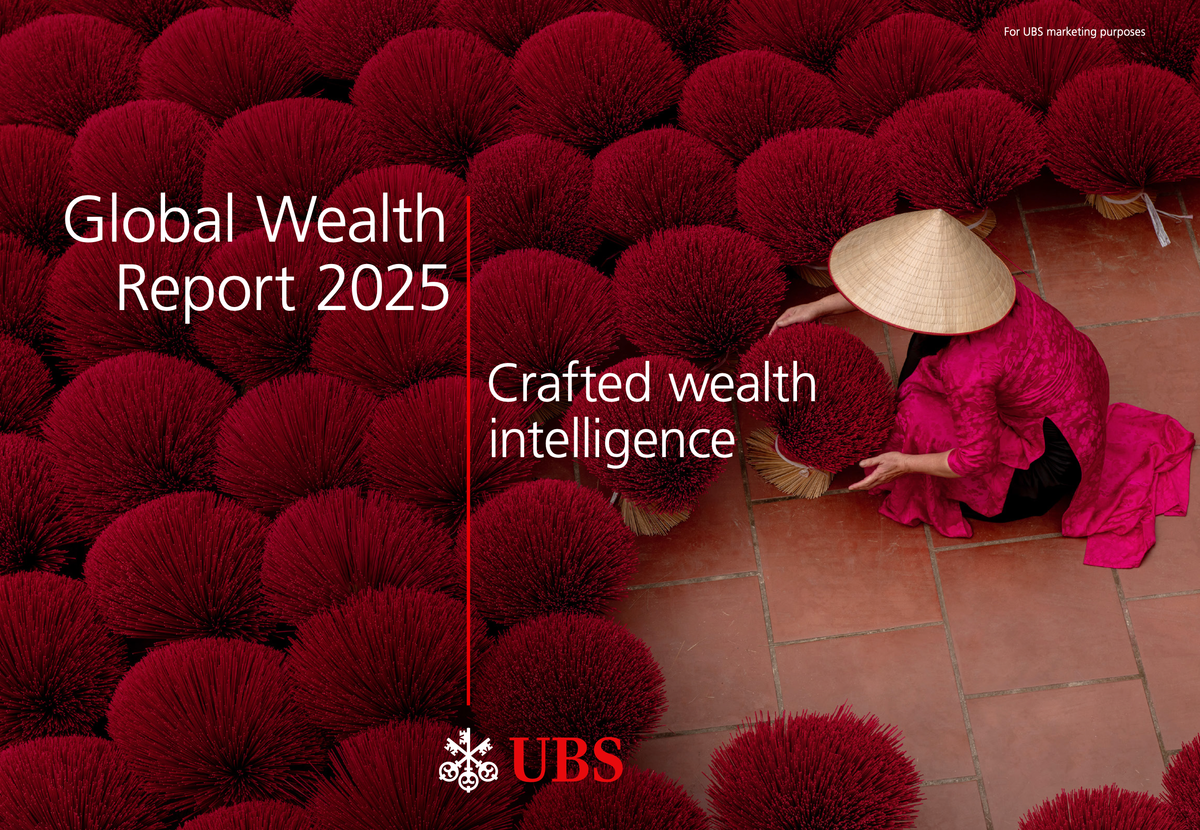The World Is Getting Richer — But Not Equally. Global Wealth Report 2025 by UBS

In a world shaped by rapid economic shifts, understanding how wealth evolves globally is more critical than ever. According to the UBS Global Wealth Report 2025, global personal wealth continued its upward trajectory in 2024, with total wealth growing by 4.6% in USD terms. But beneath the headline numbers lies a more nuanced, uneven story.
🌎 Global Wealth at a Glance
- Total Global Wealth (2024): $465 trillion
- Annual Growth: +4.6% (vs. +4.2% in 2023)
- Top-performing regions:
- Eastern Europe: +12.01%
- North America: +11.98%
- Regions with negative growth:
- Western Europe, Oceania, and Latin America (in USD terms)
North America captured 39.3% of global wealth in 2024, driven by strong financial markets and a stable U.S. dollar. Meanwhile, Asia-Pacific and EMEA saw their share decline.
💵 Average Wealth per Adult (USD)
|
Region |
Avg. Wealth |
|---|---|
|
North America |
$593,347 |
|
Oceania |
$496,696 |
|
Western Europe |
$287,688 |
|
Greater China |
$88,985 |
|
Southeast Asia |
$40,753 |
|
Latin America |
$34,694 |
|
Eastern Europe |
$48,638 |
Despite overall gains, stark inequalities remain. For example, Switzerland and the U.S. continue to lead in average wealth, but median wealth tells a different story — countries like Luxembourg, Australia, and Belgium top the list when it comes to wealth held by the “typical” adult.
👤 The Rise of the EMILLI: Everyday Millionaires
UBS introduces the term EMILLI, or Everyday Millionaire — individuals with between $1 million and $5 million in assets.
- As of 2024, there are 52 million EMILLIs, quadruple the number in 2000.
- They control $107 trillion, nearly as much as individuals with more than $5 million.
This reflects a major structural shift: wealth is no longer concentrated solely at the ultra-elite level.
📊 Wealth Distribution: Who Owns What?
- The top 1.6% of adults (millionaires) own 48.1% of global wealth.
- Those with less than $10,000 make up 41.3% of the population, but hold only 0.6% of wealth.
- U.S. millionaires alone: 23.8 million (1,000+ added per day in 2024)
- China: 6.3 million millionaires and rising fast
This disparity is further visible in countries like India, where median wealth is rising despite relatively low per-capita averages.
⚖️ Wealth Inequality: The Gini View
- Most unequal countries (Gini index):
- Brazil & Russia: 0.82
- South Africa: 0.81
- U.S.: 0.74
- Most equal:
- Slovakia: 0.38
- Belgium & Japan: 0.47
Interestingly, the U.S. saw rising equality in the past 5 years — not because the rich got poorer, but because lower- and middle-class wealth grew faster.
🔮 What’s Next?
UBS projects an additional 5.3 million millionaires by 2029, a 9% increase. Key engines of future growth?
- North America
- Greater China
Meanwhile, the share of wealth held by emerging markets remains around 30% and is expected to stay stable — many of these economies are no longer in the rapid-acceleration phase.
🧠 Deep Founder Analysis
Why it matters:
This report reinforces the accelerating wealth polarization — not only between individuals but between regions. For startups targeting the financial sector, this represents a shift in who the customer is: it’s no longer only the ultra-wealthy but also the rising EMILLIs with $1–5 million in liquid assets, who are increasingly seeking modern advisory and investment tools.
Risks & opportunities:
With wealth inequality persisting, there’s political risk — pressure for higher taxation or regulation. However, there’s also opportunity: new segments like EMILLIs are underserved by traditional private banks and open to tech-native solutions.
Startup idea or application:
Build a platform that democratizes private banking services — offering EMILLIs smart portfolio optimization, succession planning, and tax-efficient investing using AI. Think of it as the “Wealthfront for the $1M+ class” with embedded wealth education and family office-lite services.

Want to explore your startup potential or validate an idea based on this trend?
👉 Try Deep Founder — Your co-pilot for startup research.


Comments ()